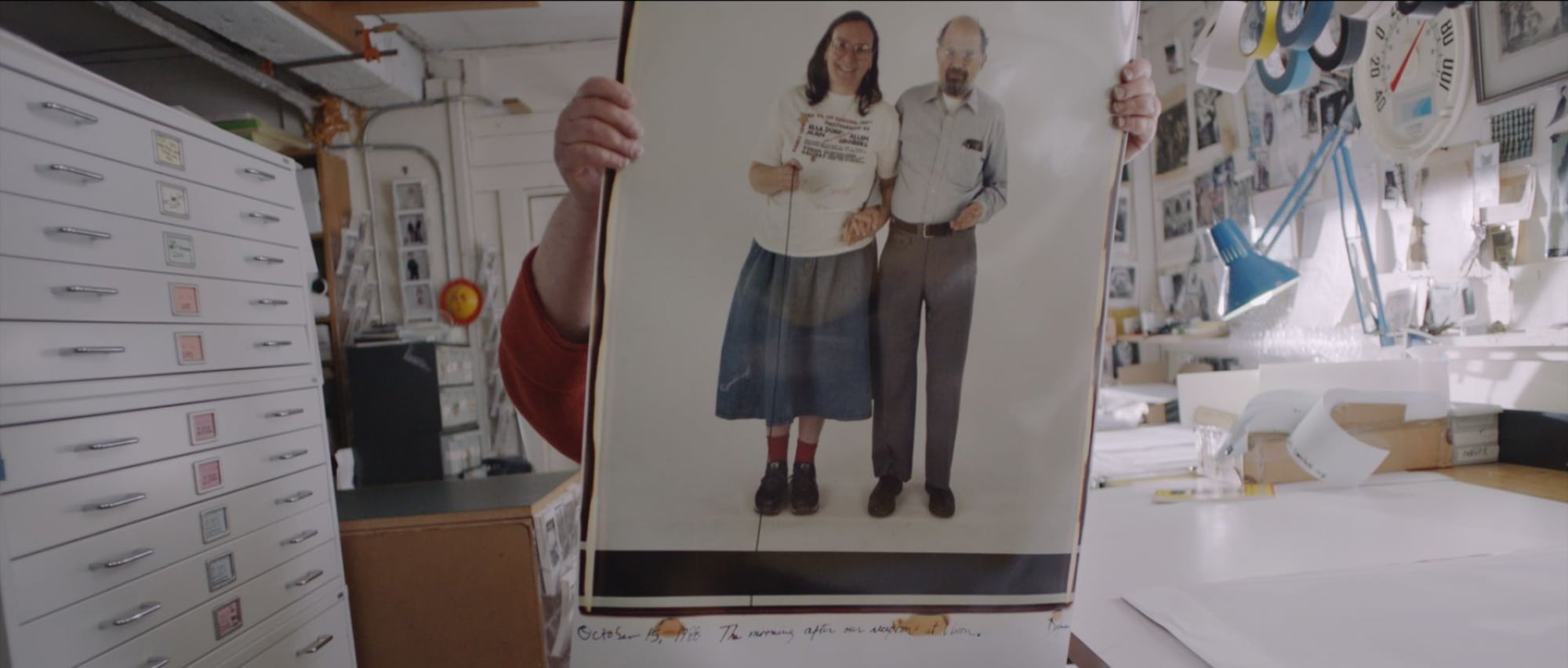Errol Morris has made a name for himself as a documentarian on the backs of some heavy-hitting, serious films with intense character studies and startling revelations about not only major world events, but humanity itself. Films like The Thin Blue Line, Standard Operating Procedure, and Tabloid look at the dark, violent, often contradictory underbelly of human nature. While these are some the more celebrated films of Morris’ oeuvre, he has also dabbled in lighter fare like Gates of Heaven, Vernon, Florida and Fast, Cheap, and Out of Control, but even these efforts still contain some weighty overtones. His latest picture, The B-Side: Elsa Dorfman’s Portrait Photography, is more in the latter category, but still a welcome anomaly in Morris’ career. It’s a charming, simplistic look at one kind woman’s passion for large scale photography; nothing more and nothing less. It’s possibly the lightest film Morris has ever made, and the director seems to be basking nicely in the glow of his titular subject.
Cambridge, Massachusetts native Elsa Dorfman specializes in a very specific medium of photography. The former school teacher never picked up a camera until she was 28, but despite little formal training she was immediately hooked by snapping photographs that she would sell out of a shopping cart on the street corners of Harvard Square. She was friendly with poets, musicians, and artists – most notably Allen Ginsberg (with whom she had a particular closeness) and Jonathan Richman – taking some of the most iconic portraits of her generation. Although she started off shooting 35mm and she never fully turned her back on the medium, she became enamoured with the look and feel of Polaroid instant film, particularly a rare 20X24 exposure that instantaneously created large scale portraits in moments. After not being taken seriously by Polaroid, she was eventually able to sway the corporation into renting her one of only five 20X24 cameras in the world, turning her Massachusetts Avenue studio into a major destination for those looking to get their portraits taken. Following an ill fated change in leadership in the mid-200s that led to Polaroid ceasing production of film in 2009, Dorfman, now in her early 80s, contemplates retirement when her stockpile of film runs out forever and wonders what will become of her massive archives of delicate portraits.
The B-Side finds Morris jettisoning his harder journalistic edge and “Interrotron” style of interviewing in favour of just hanging around with Dorfman in her archives and letting the photographer talk about her work and life in her own terms. In his few brief, off-camera interjections, you can hear the smile on Morris’ face in his voice. Dorfman and her work bring out a certain level of affection in Morris, and as a result the director takes a Laissez-faire approach. There are no other talking heads other than Dorfman; not even input from her husband and son. Her life’s story and work unfold in a mostly linear fashion. She’s humble, witty, and potty mouthed (like most great Bostonians). Morris addresses her like one would talk to a friend. He doesn’t grill her or press hard for answers. He doesn’t need to. For Morris, Dorfman is an open book.

It all sounds very slight for someone as talented at documentary filmmaking as Morris, but The B-Side casually unfurls a tale of one of photography’s underrated greats. Spending even a few moments with Dorfman is enough to make one take notice of her chops as an artist; someone who truly believes that every picture – even the rejects that clients decline to take (which she keeps in her archives as “B-sides”) – tells an intricate and fascinating story. She’s so articulate about what her work means to her that it’s unconscionable in hindsight that both Polaroid and the Boston art establishment saw very little value in her portraiture.
Perhaps it’s Dorfman’s lack of a noticeable dark side that turned the art world off on her work and something that could give some harsher critics pause, but that’s also clearly what makes Morris so enamoured with her. At one point in The B-Side, Dorfman says of her refusal to take pictures of sad people: “Life when you’re down is hard enough. You don’t want to walk around with a picture of it.” For the first time in a while, Morris finally has a pretty picture to walk around with, and the change of pace suits him nicely while doing justice to his effervescent subject.
The B-Side: Elsa Dorfman’s Portrait Photography opens at The Hot Docs Ted Rogers Cinema in Toronto and in Vancouver on Friday, June 23, 2017 and in Montreal on July 7.
Check out the trailer for The B-Side: Elsa Dorfman’s Portrait Photography:
Join our list
Subscribe to our mailing list and get weekly updates on our latest contests, interviews, and reviews.

